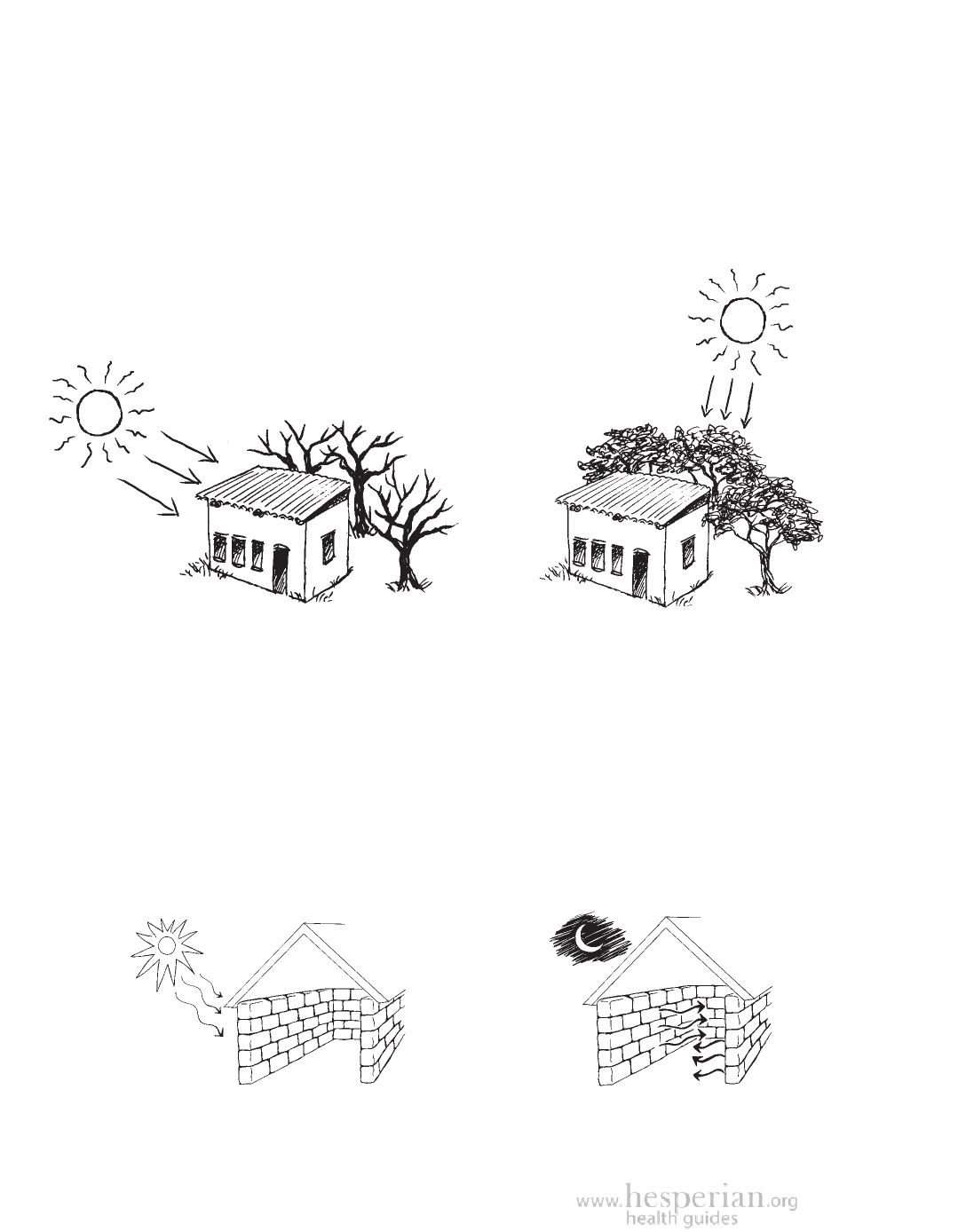
378 A Healthy Home
Make best use of sunlight
When building a house or a settlement, consider where the sun will be at
different times of the year in order to make best use of the sun’s heat. In hot
months, the sun rises high overhead at noon and provides direct heat for much
of the day. In colder months, the sun is lower in the sky, gives little heat, and
travels a different path through the sky.
In southern countries, houses will be more comfortable if most
windows and exposed walls face north, where the sun is. In
northern countries, most windows and exposed walls should
face south. This general rule will help the entire house
capture and retain the sun’s heat.
In the cold season, the low sun shining
on exposed walls and windows helps
keep a house warm.
In the hot season, trees planted on the side
of the house where afternoon sun shines
will help keep the house cool.
Choose materials for warmth
In places that get cold, some building materials help capture and store heat
in the house. Materials with more thickness store heat best. Stone, brick, and
blocks made of mud and straw store heat better than wood or unfilled concrete
blocks. Filling concrete blocks with earth or concrete helps them store heat
better. Using any of these materials, the best wall thickness for storing heat is
4 to 5 inches.
When the sun shines on the house,
heat collects in the walls and floor.
When the sun sets and the air cools,
the walls and floor release heat into the room.
A Community Guide to Environmental Health 2012